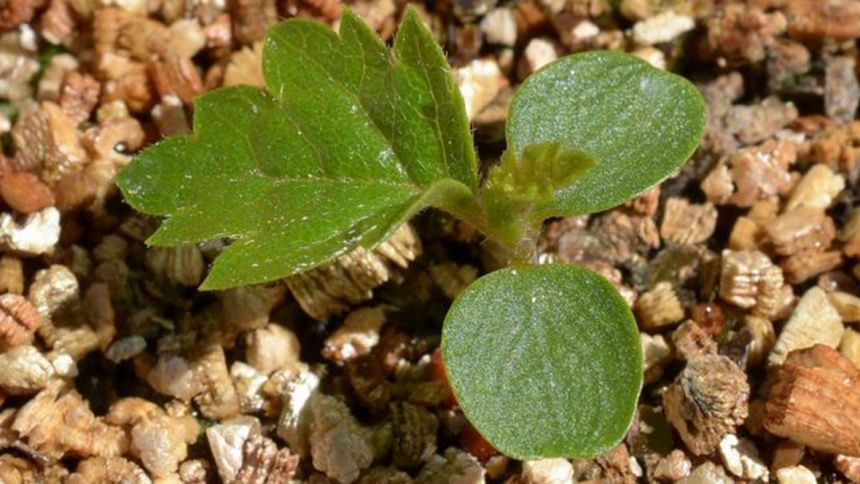UK team germinates critically endangered Japanese birch

UK scientists have successfully germinated seeds from the critically endangered Japanese Birch, a species that has just 21 known trees remaining.
The seeds were collected last year during an expedition to a remote location in mountains near Tokyo.
Experts suggest that the remaining wild population of Betula chichibuensis is too small to sustain itself unaided.
The young trees will be shared with other arboretums in an effort to help conserve the threatened species.
The International Union for the Conservation of Nature (IUCN) forecasts a bleak outlook for the tree species in the wild.
In its Red List of Threatened Species, it observes: "The small population and restricted distribution... make it susceptible to natural disaster or disease.
"The species is also self-incompatible, requiring two individuals to be close enough to cross-pollinate one another, making seed production uncertain in small subpopulations."
It adds that there was also evidence of deforestation and habitat degradation in the area where the remaining trees are found, "presenting a threat to the survival of this species".
Growing hope
During 2014, a team led by researchers from the University of Oxford Botanic Gardens, in conjunction with the University of Tokyo, embarked on an expedition to collect seed samples from the threatened birch trees.
Part of the team was Dan Luscombe, a dendrologist from the Forestry Commission's Bedgebury National Pinetum and Forest.
He told BBC News: "I guess we got little lucky in terms of being there at the right time.
"It is found in a very, very remote location and it is not an easy place to get to. It has got very, very low viability so we were very lucky that we were able to collect a lot of seeds... as birch seeds shatter and shed everywhere, so once it has done that you will never find it."
Luscombe estimated that the team were able to collect about 1,000 seeds, from which the team at Bedgebury Pinetum were able to produce about 100 seedlings.
"Ideally, we always grow trees that have been sourced from the wild so we are conserving the gene (resource)," he explained.
"At the end of the day, we have got these really rare trees and their habitats are highly threatened. If you want to put them back or want to put them somewhere else then you need to know how to grow them."
The long-term aim of the project is also to plant Japanese birch saplings in arboretums all around the country, as well as working closely with their Japanese colleague to protect the survival of the threatened species in the wild.
"We will share the love so then other arboretums can try growing this species in different climates and soils etc," Luscombe added.
He also explained that planting samples of the trees in various parts around the UK would reduce the risk of the species being lost to storm damage or disease.
There are also plans to plant a grove of the trees, known as a seed orchard, to provide an ongoing supply of seeds.

 For all latest news, follow The Daily Star's Google News channel.
For all latest news, follow The Daily Star's Google News channel. 



Comments